Discover the Mysteries of Qujialing Ruins: A Journey into Ancient Chinese Civilization
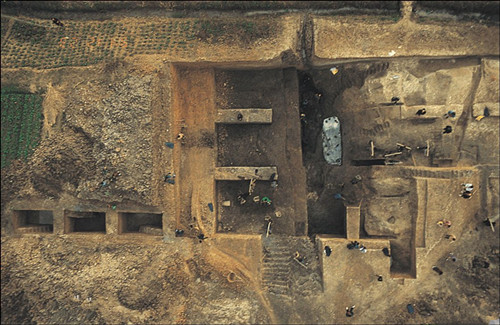
An Essential Guide to Visiting Qujialing Ruins
In This Guide
- An Essential Guide to Visiting Qujialing Ruins
- The Rich History and Legends of Qujialing Ruins
- Main Highlights: What You Absolutely Can’t Miss
- Planning Your Visit: A Practical Guide
- Tickets: Prices, Booking, and Tips
- How to Get There: A Complete Transportation Guide
- Local Cuisine and Accommodation Nearby
- Frequently Asked Questions
- Final Thoughts on Your Trip
Nestled in the heart of Hubei Province, the Qujialing Ruins offer a captivating glimpse into one of China’s earliest agricultural civilizations. This archaeological site, dating back over 5,000 years, is not merely a collection of relics; it is a testament to the ingenuity and resilience of prehistoric societies that laid the groundwork for modern Chinese culture. As you step into the Qujialing Site Museum and its surrounding park, you are transported to an era where rice cultivation began to flourish, shaping the landscape and lifestyle of its inhabitants.
The park, sprawling over 402 hectares, is divided into four functional areas designed to enhance your exploration and understanding. Each section tells a different aspect of the Qujialing narrative, from the intricacies of ancient farming techniques to the socio-cultural developments of the time. The central theme, “Paddy Source · Farming Soul,” reflects the site’s significance as the birthplace of rice culture in China, intertwining agricultural history with the identity of the region.

Qujialing Ruins.
Visiting the Qujialing Ruins is more than just an archaeological excursion; it is an immersive experience that highlights the evolution of farming practices and their lasting impact on Chinese civilization. Here, you can explore reconstructed settlement sites, see how river systems once supported agricultural life, and admire the carefully curated exhibition halls that house artifacts from this remarkable community.
What to Expect
- Interactive Exhibits: The museum features interactive displays that illustrate prehistoric agricultural techniques, allowing visitors to grasp the complexities of early farming practices.
- Scenic Landscapes: The park’s design incorporates natural beauty, with paths winding through lush landscapes and views of ancient rice planting fields, creating a serene backdrop for exploration.
- Cultural Significance: Engage with the historical narratives that shaped not only the local culture but also influenced agricultural practices across China.
Practical Tips for Your Visit
- Best Time to Visit: Spring and autumn are ideal for visiting Qujialing, as the weather is mild, and the natural scenery is at its most vibrant.
- Getting There: Jingmen is well-connected by high-speed rail and local transportation. From the city center, taxis and buses make it easy to reach the archaeological site.
- What to Bring: Comfortable walking shoes are a must, as the park features extensive pathways. Don’t forget a camera to capture the stunning landscapes and historical artifacts!
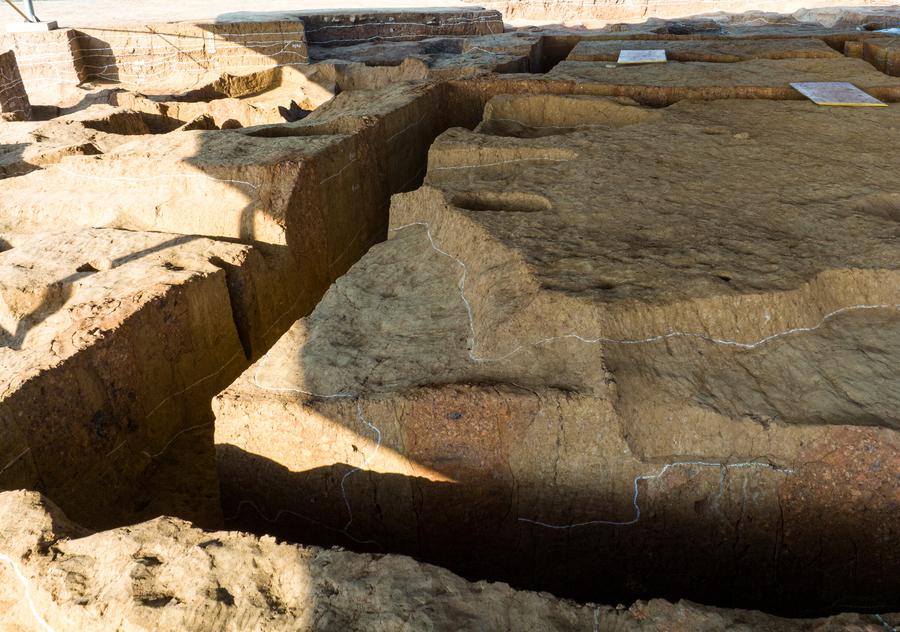
Qujialing Ruins.
Whether you are a history buff, an agriculture enthusiast, or simply a curious traveler, the Qujialing Ruins promise to enrich your understanding of China’s deep-rooted agricultural heritage. Prepare to be inspired as you uncover the stories of those who once thrived in this fertile valley, and take home a piece of the rich tapestry that is Chinese history and culture.
The Rich History and Legends of Qujialing Ruins
The Qujialing Ruins, nestled in the heart of Hubei province, represent a significant chapter in the story of China’s agricultural heritage. This archaeological site not only unveils the ancient practices of rice cultivation but also embodies the spirit of a civilization that thrived thousands of years ago.
Unearthing the Past
Dating back to the Neolithic period, the Qujialing culture flourished around 4,500 years ago. Archaeological excavations have revealed a wealth of artifacts that indicate an advanced society with a deep connection to the land. The site contains remnants of residential structures, storage pits, and tools, showcasing the innovative agricultural techniques employed by its inhabitants. These early farmers cultivated rice in the fertile valleys, laying the foundations for what would become one of the world’s most significant agricultural regions.
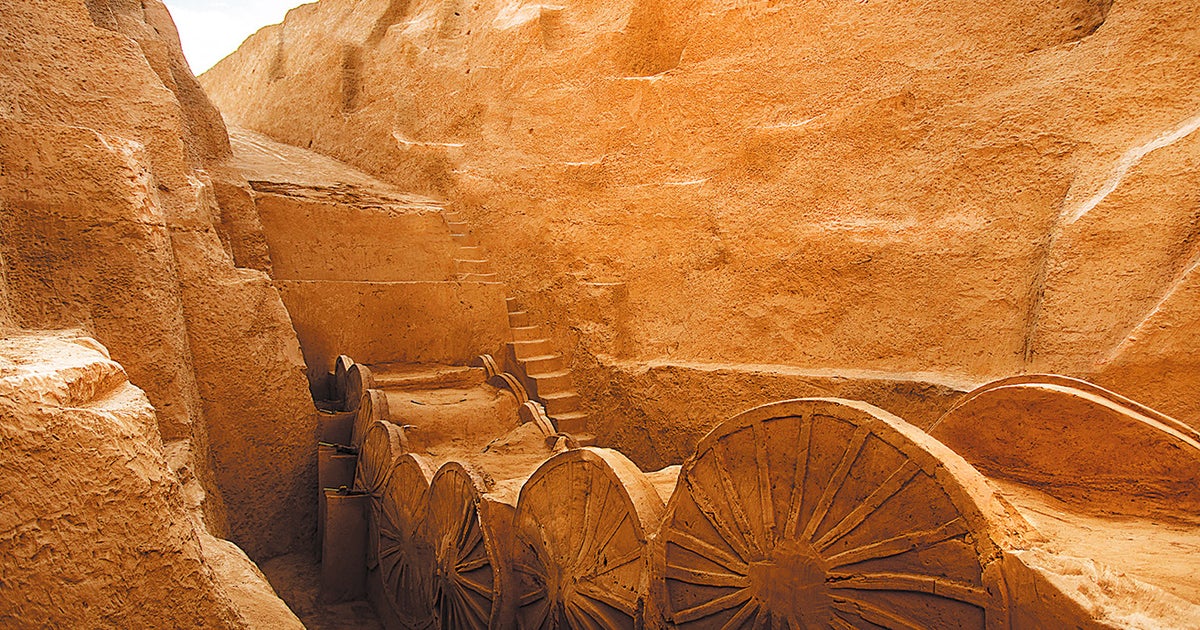
Qujialing Ruins.
The Cultural Significance
The Qujialing Ruins are often referred to as the “birthplace of Chinese agricultural culture.” The park surrounding the ruins has been meticulously designed to honor this title, featuring various functional areas that narrate the evolution of agriculture in China. From the display of prehistoric farming techniques to the exploration of ancient settlement patterns, visitors are invited to trace the historical path of agriculture and understand its profound impact on Chinese society.
Legends and Myths
The legends surrounding the Qujialing Ruins are as rich as the soil from which they emerged. Local folklore speaks of mythical figures who taught ancient communities the secrets of farming and harvesting. Stories of divine intervention highlight a time when the gods bestowed knowledge upon the people, ensuring their survival and prosperity through agriculture. These legends not only reflect the agrarian lifestyle of the Qujialing culture but also embody the reverence for nature and the spiritual connection the people had with their environment.
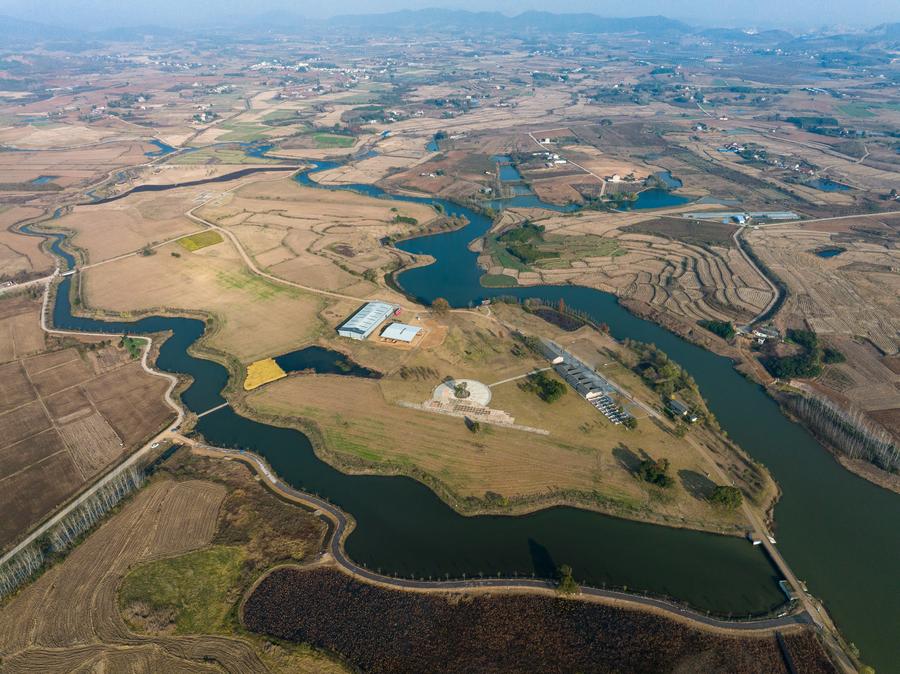
Qujialing Ruins.
A Modern Tribute
In contemporary times, the Qujialing site has transformed into a cultural park that preserves the historical narrative of ancient agriculture. The park’s thematic focus, “Paddy Source · Farming Soul,” encapsulates this commitment to honoring the past while educating future generations. Visitors can explore the site’s various zones, including archaeological displays and lush landscapes that highlight the significance of rice cultivation in shaping not just local traditions but also the broader tapestry of Chinese culture.
Conclusion
As you traverse the Qujialing Ruins, you are not merely walking through remnants of an ancient civilization; you are stepping into the living history of China’s agricultural roots. This remarkable site serves as a testament to human ingenuity and the enduring legacy of a culture that has thrived on the bounty of the land for millennia. Whether you’re an avid history enthusiast or a curious traveler, the stories woven into the fabric of the Qujialing Ruins will leave an indelible mark on your journey through China’s rich cultural heritage.
Main Highlights: What You Absolutely Can’t Miss
When visiting the Qujialing Ruins, also known as the birthplace of Chinese agricultural culture, you will stumble upon a treasure trove of historical significance, breathtaking landscapes, and immersive experiences that resonate with the essence of ancient Chinese civilization. Below are the key highlights you absolutely cannot miss during your exploration of this remarkable site.
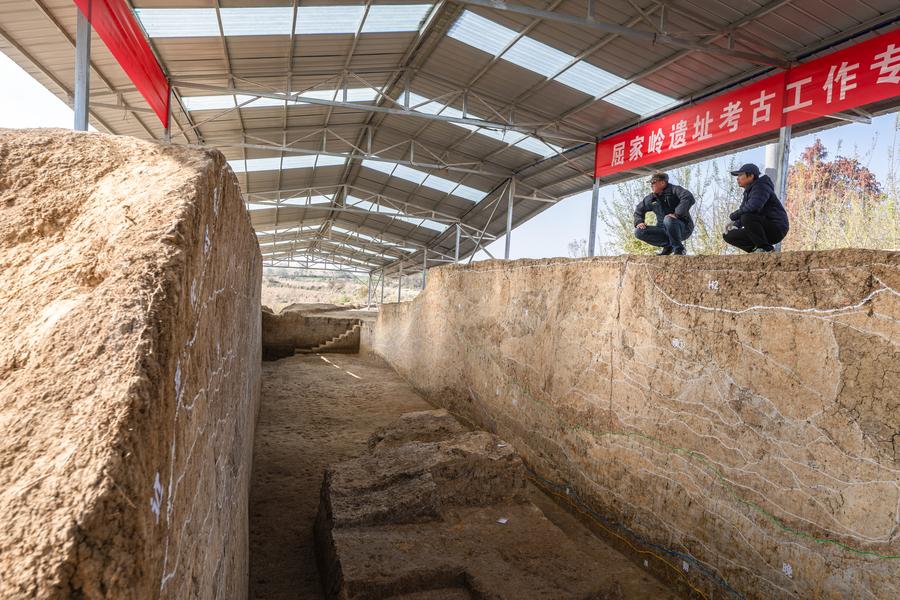
Qujialing Ruins.
1. Qujialing Site Museum
Begin your journey at the Qujialing Site Museum, where you can delve into the rich history of the Qujialing culture. The museum offers an extensive collection of artifacts unearthed from the archaeological site, including tools, pottery, and remnants of early agricultural practices. Through detailed exhibits, you’ll gain insights into the development of prehistoric agriculture in China, emphasizing the techniques and lifestyle of the ancient inhabitants.
2. Archaeological Reserve Area
Wander through the Archaeological Reserve Area, which preserves the original settlement sites of the Qujialing culture. Here, you can observe the remnants of ancient houses and rice paddies, offering a glimpse into the agricultural foundations that shaped early Chinese society. This area is not only a historical site but also a testament to the ingenuity and adaptability of early farmers.
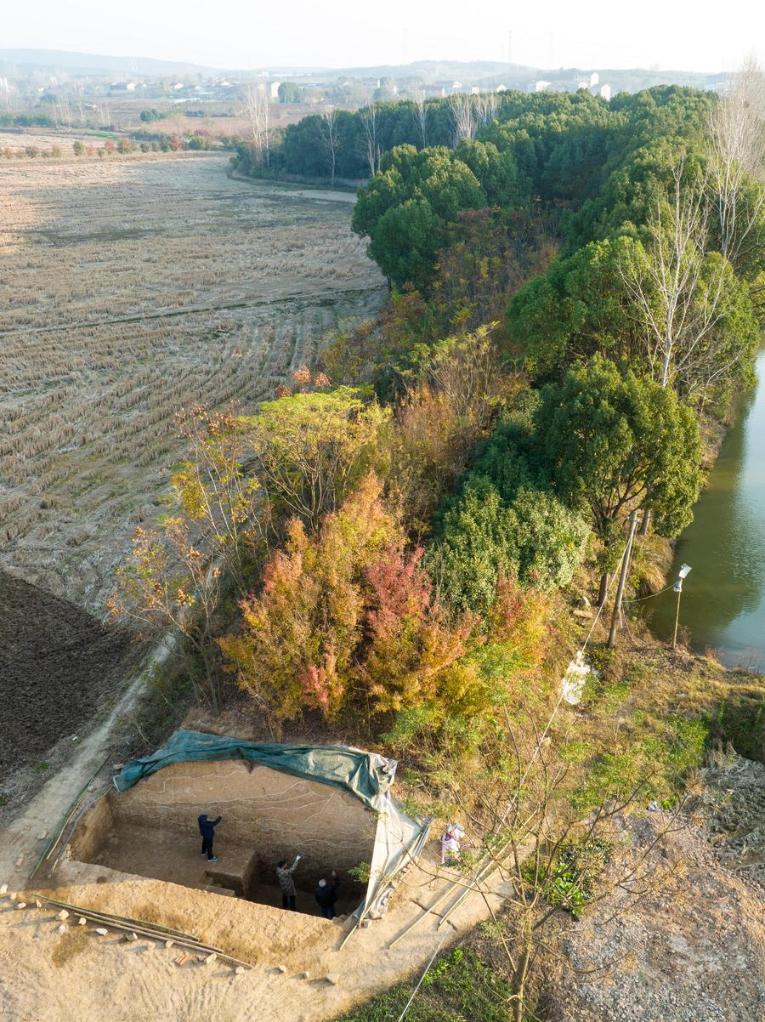
Qujialing Ruins.
3. Scenic Landscapes
The park itself spans an impressive 402 hectares, designed to harmonize with the natural environment. Take a leisurely stroll through the landscape display area, where beautifully curated gardens showcase the region’s biodiversity and agricultural heritage. The serene river systems and lush rice fields create a picturesque backdrop, perfect for photography and reflection.
4. Themed Zones of Agriculture
Experience the park’s thematic zones that illustrate the evolution of agriculture in China. Engage with displays focused on “Tracing the Origin of Agriculture”, where you can learn about the transition from foraging to farming and how this pivotal shift laid the groundwork for subsequent Chinese civilizations. Each zone thoughtfully connects historical narratives with the archaeological evidence surrounding you.
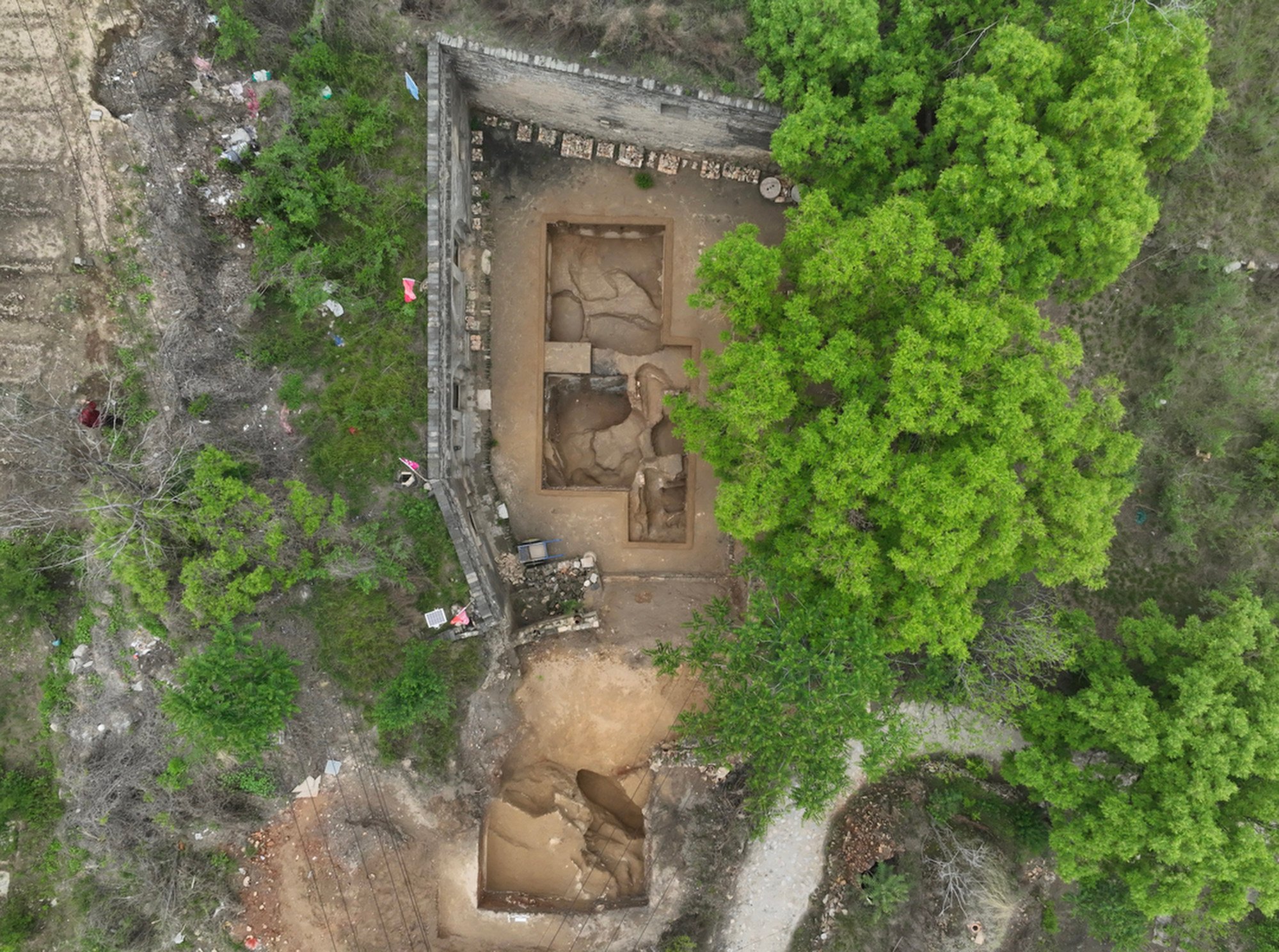
Qujialing Ruins.
5. Cultural Events and Activities
Check the schedule for any cultural events or workshops that may be taking place during your visit. These activities often include traditional rice planting demonstrations, storytelling sessions, and hands-on experiences that bring the ancient agricultural practices to life. Participating in these activities allows you to connect with both the history and the living culture of the region.
6. Nearby Attractions
While in Jingmen, take the opportunity to explore other nearby historical sites. The Xianling Tomb and Mochou Village are both within reach and offer rich experiences tied to the region’s cultural heritage. Each site contributes to understanding the broader context of Hubei’s historical significance.
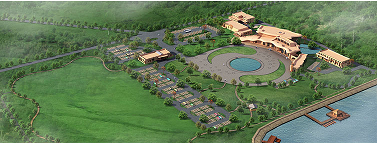
Qujialing Ruins.
7. Gastronomic Delights
Don’t leave without sampling local delicacies that reflect the agricultural bounty of the area. The region is known for its Jingmen Rice Noodles, a must-try dish that showcases the importance of rice in local cuisine. Visit local markets and eateries to savor the flavors that have been cultivated through centuries of agricultural tradition.
Conclusion
The Qujialing Ruins offer an unparalleled glimpse into the dawn of Chinese agriculture, blending historical inquiry with cultural appreciation. In this serene yet profound environment, you not only witness the remnants of the past but also engage with the ongoing narrative of agricultural heritage in China. Whether you’re a history buff, a cultural enthusiast, or simply a curious traveler, Qujialing is an enriching destination that promises to leave a lasting impression.
Planning Your Visit: A Practical Guide
Exploring the Qujialing Ruins: A Practical Guide for Your Visit
Nestled in the picturesque Jingmen City of Hubei Province, the Qujialing Ruins offer a fascinating glimpse into China’s prehistoric agricultural civilization. This comprehensive guide will help you navigate your visit to this important cultural and historical site, ensuring you make the most of your experience.
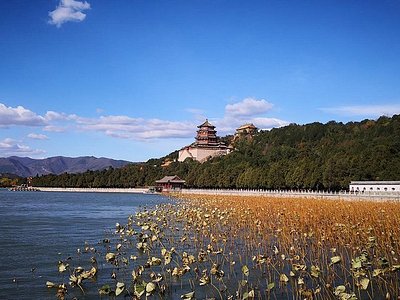
Qujialing Ruins.
Getting There
Location
The Qujialing archaeological site park is located within the Qujialing Management District in Jingmen City. It is easily accessible by road, and visitors can either drive or use public transportation to reach the site.
Transportation Options
– By Car: If you are driving, the site is well-marked, and there is ample parking available.
– Public Transport: Buses and taxis frequently run from downtown Jingmen to the site. Check local schedules for the most convenient routes.
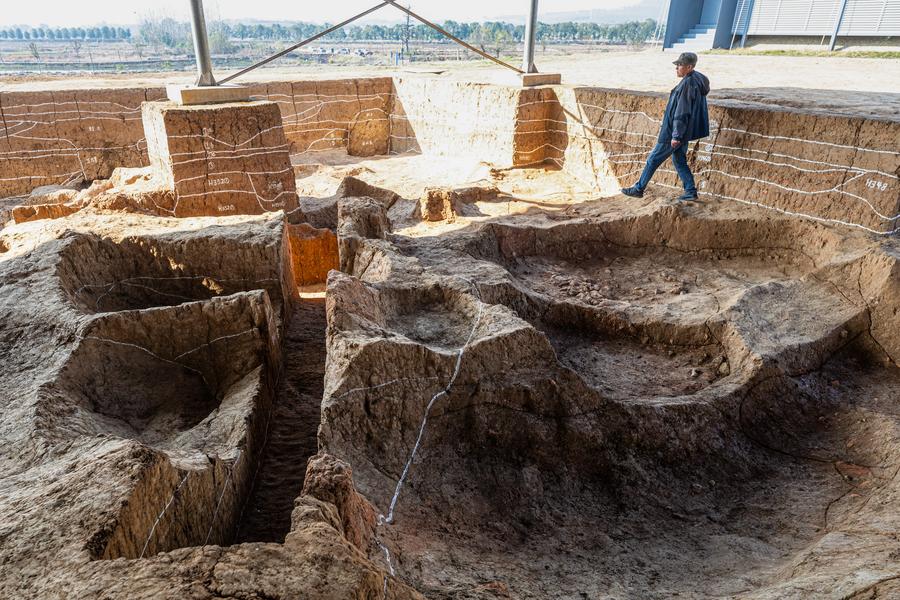
Qujialing Ruins.
Best Time to Visit
The ideal times to explore the Qujialing Ruins are during spring (March to May) and autumn (September to November). These seasons offer pleasant weather, making your visit enjoyable as you wander through the lush landscapes and historical exhibits.
Opening Hours
The Qujialing Site Museum is generally open from 8:30 AM to 5:30 PM. It is advisable to check for any seasonal variations in hours or special events that may affect your visit.
Admission Fees
Entrance to the Qujialing archaeological site typically requires a ticket. Prices may vary, so it is recommended to check in advance on official websites or local tourism offices for the current rates and any potential discounts.
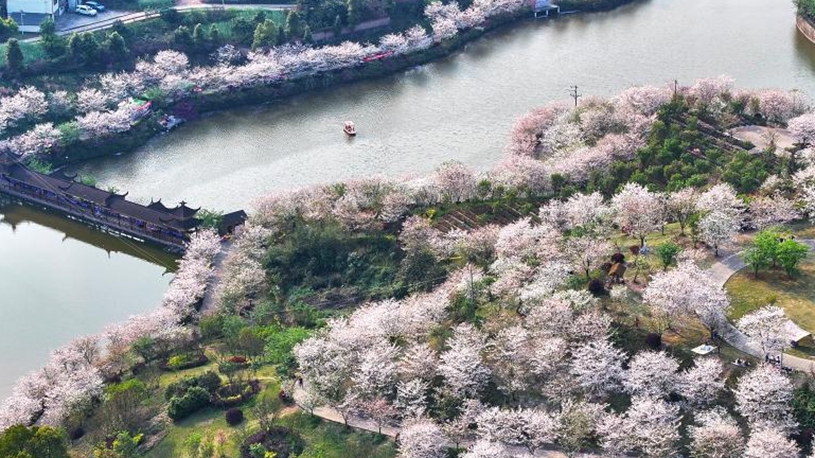
Qujialing Ruins.
What to Expect
The Qujialing archaeological site park spans 402 hectares and is divided into four functional areas:
– Site Display Area: This area showcases the archaeological findings, providing visitors with an immersive experience of ancient agricultural practices.
– Landscape Display Area: Enjoy the scenic beauty and well-preserved environments that reflect the agricultural heritage of the area.
– Archaeological Reserve Area: This section is dedicated to ongoing research and preservation efforts.
– Service Management Area: Facilities like restrooms, information centers, and souvenir shops are located here for visitor convenience.
Theme and Focus
The park’s theme, “Paddy Source · Farming Soul,” emphasizes the significance of rice culture and the essence of farming in Chinese history. Expect to see exhibits tracing the origins of agriculture, showcasing settlement sites, river systems, and rice planting landscapes.
Tips for Your Visit
- Guided Tours: Consider joining a guided tour for in-depth insights into the historical significance of the site. Knowledgeable guides can bring the ancient stories to life.
- Photography: The park’s landscapes provide stunning backdrops for photography. Be sure to capture the beauty of both the natural surroundings and the archaeological sites.
- Stay Hydrated and Prepared: Wear comfortable shoes, bring water, and apply sunscreen. Depending on the season, a light jacket may be needed for cooler temperatures, especially in the mornings and evenings.
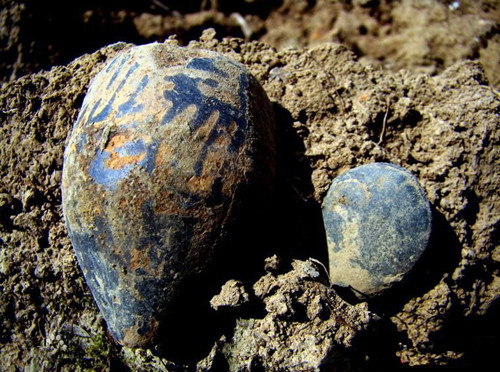
Qujialing Ruins.
Nearby Attractions
After exploring the Qujialing Ruins, extend your cultural journey by visiting other local attractions:
– Xianling Tomb: A stunning Ming Dynasty imperial tomb known for its historical architecture.
– Huangxian Cave: Famous for its remarkable stalactite formations, this scenic area is perfect for nature lovers.
– Mochou Village: Explore cobblestone streets and experience local cultural heritage, including traditional shadow puppet shows.
Accommodation Options
For a comfortable stay in Jingmen, consider the following accommodations:
– People’s Marriott Hotel: A newly opened hotel close to the city center, offering modern amenities.
– City Convenience Hotel: A budget-friendly option with good heating and basic comforts.
Final Thoughts
Visiting the Qujialing Ruins is not just an exploration of ancient history; it’s an opportunity to connect with the roots of Chinese agricultural culture. Immerse yourself in the serene landscapes, revel in the rich heritage, and take home memories of a captivating journey through time. Whether you’re a history enthusiast, a culture seeker, or simply a curious traveler, the Qujialing Ruins are a must-visit destination in Hubei Province. Prepare for an enriching experience that will deepen your understanding of China’s profound connection to agriculture and its historical evolution.
Tickets: Prices, Booking, and Tips
Visiting the Qujialing Ruins: Ticket Information and Travel Tips
The Qujialing Ruins, an important archaeological site in Jingmen, Hubei Province, offer a fascinating glimpse into ancient rice cultivation and farming practices in China. To ensure a seamless visit to this historical treasure, here’s a comprehensive guide on ticket prices, booking options, and essential tips for international travelers.
Ticket Prices
- Adult Admission: CNY 80 (approximately USD 12)
- Children and Students: CNY 40 (approximately USD 6)
- Senior Citizens: Free admission for those aged 65 and older, with proper identification.
Note: Prices may vary during peak seasons or special events, so it’s wise to check in advance.
Booking Options
-
On-Site Purchase: Tickets can be purchased directly at the Qujialing Site Museum. However, during busy periods such as national holidays or weekends, it is advisable to arrive early to avoid long queues.
-
Online Booking: For convenience, tickets can also be booked through various travel platforms or the official Qujialing site museum’s website. Online booking allows you to secure your entry in advance and skip the lines upon arrival.
-
Group Discounts: If traveling with a group of more than 20 people, inquire about group discounts, which can significantly reduce the overall cost.
Tips for Your Visit
-
Best Time to Visit: The ideal months to explore the Qujialing Ruins are in spring (March to May) and autumn (September to November). During these periods, the weather is mild, and the surrounding landscapes are particularly beautiful.
-
Guided Tours: Consider joining a guided tour to gain deeper insights into the archaeological significance of the site. Knowledgeable guides can enrich your experience with stories and details about the Qujialing culture and its development.
-
Plan Your Visit: The museum is divided into various functional areas, including archaeological reserves and display areas. Allocate sufficient time to explore each section fully—ideally, a few hours to immerse yourself in the history and exhibits.
-
What to Bring: Make sure to wear comfortable walking shoes, as the site encompasses a substantial area. Additionally, bring a camera to capture the stunning landscapes and archaeological features.
-
Local Transportation: If you’re not driving, taxis and local buses are readily available in Jingmen. Consider downloading a navigation app to help you navigate the city easily.
-
Combine Your Visit: While in Jingmen, take the opportunity to explore nearby attractions like the Ming Dynasty Xianling Tomb and Huangxian Cave. These sites complement your experience of the region’s rich history and natural beauty.
-
Cultural Etiquette: Be respectful of the site’s historical significance. Follow guidelines posted around the museum and avoid touching artifacts unless permitted.
By following these tips and preparing accordingly, your visit to the Qujialing Ruins will not only be educational but also a memorable adventure into China’s agricultural heritage. Enjoy your journey into the past!
How to Get There: A Complete Transportation Guide
Getting to Qujialing Ruins: Your Essential Transportation Guide
Discovering the Qujialing Ruins, a significant site that sheds light on the origins of Chinese agricultural civilization, is a journey well worth the effort. Located in the Jingmen city of Hubei Province, the ruins are accessible by various means of transportation. Here’s how to make your way to this remarkable archaeological site.
By Air
The closest major airport to Jingmen is Wuhan Tianhe International Airport (WUH), located approximately 150 kilometers (93 miles) away. This airport handles both domestic and international flights, making it a convenient starting point for your journey.
From Wuhan Airport:
1. High-Speed Train: Take the airport shuttle to Wuhan Railway Station and board a high-speed train to Jingmen North Station. The journey typically takes around 50 minutes to 1 hour.
2. Taxi or Rideshare: Alternatively, you can opt for a taxi or rideshare service directly from the airport to Jingmen, which will take approximately 2 hours depending on traffic.
By Train
For travelers already in China, reaching Jingmen via rail is a comfortable and scenic option:
– From Wuhan: High-speed trains frequently depart from Wuhan Railway Station to Jingmen North Station. The trip takes about 1 hour.
– From Other Major Cities: You can also catch trains from cities such as Changsha or Xi’an. Be sure to check the schedule, as not all trains may be high-speed.
By Bus
If you prefer road travel, buses are available from various cities in Hubei province:
– From Wuhan: Long-distance buses leave from Wuhan’s Wuchang Bus Station, taking around 2-3 hours to reach Jingmen. Buses run frequently throughout the day.
– Local Buses: Once in Jingmen, local buses and taxis can take you to the Qujialing Ruins, located about 10 kilometers (6 miles) from the city center.
By Car
For those who enjoy the freedom of driving:
– Self-Drive from Wuhan: The drive to Jingmen takes about 2 hours via the G42 and G55 highways. The route is well-marked, and you’ll be treated to beautiful views of the Hubei countryside.
– Car Rentals: Several car rental agencies operate at Wuhan Airport or in the city, allowing you to explore at your own pace.
Local Transportation in Jingmen
Once you arrive in Jingmen, the following options will help you get to the Qujialing Ruins:
– Taxi Services: Taxis are readily available and are a quick way to reach the site.
– Ride-Sharing Apps: Popular apps like Didi are operational in Jingmen, providing a convenient alternative to traditional taxis.
– Public Buses: Local buses can take you to the Qujialing site; however, check the schedule as routes may vary.
Tips for Your Journey
- Language: English may not be widely spoken, so having a translation app or a phrasebook can be helpful.
- Timing: The best times to visit are spring and autumn, when the weather is mild and the scenery is particularly beautiful.
- Local Currency: Always have some Chinese Yuan (CNY) on hand for public transportation and small purchases.
Embarking on your journey to the Qujialing Ruins will not only provide insight into China’s agricultural heritage but also immerse you in the rich culture and history of Hubei Province. Whether you choose to fly, take the train, or drive, each mode of transportation offers its own unique experience. Enjoy your adventure!
Local Cuisine and Accommodation Nearby
Exploring the Qujialing Ruins is not just a journey into the depths of ancient agricultural practices, but it also opens a window into the vibrant local culture and cuisine of Jingmen, Hubei Province. After immersing yourself in the fascinating history of this archaeological site, you’ll want to indulge in the region’s culinary delights and find a comfortable place to stay.
Local Cuisine
Jingmen is known for its rich agricultural heritage, which is reflected in its local dishes. Here are some must-try foods that will tantalize your taste buds:
-
Jingmen Rice Noodles (荆门米线): These silky noodles are a local breakfast staple. They are typically served with a special sauce and fresh vegetables, making them a light yet satisfying start to your day.
-
Sanxian Bean Skin (三鲜豆皮): A delightful snack that features a crispy exterior with a tender, fragrant filling. It’s a popular choice among locals and visitors alike.
-
Grilled Fish (烤鱼): Head to the night markets for this spicy and flavorful dish. Freshly caught from the nearby rivers, the fish is marinated and grilled to perfection, offering a taste of the region’s aquatic bounty.
-
Clay Pot Fish Head (砂锅鱼头): A signature dish made from the fathead fish native to the Zhanghe River. The broth is so fresh you’ll find yourself wanting to drink it straight from the pot!
-
Guochang Chicken (锅肠鸡): This Jingzhou-style hot pot chicken is cooked with a unique doubanjiang sauce, providing a savory depth that is simply irresistible. Be sure to visit one of the older establishments on Jianshe Street for an authentic experience.
-
Local Beverages: Don’t miss trying Jingmen Beer and rice wine, both of which pair beautifully with the local cuisine.
Accommodation Nearby
For a comfortable stay while exploring the Qujialing Ruins, consider these accommodation options that cater to different budgets and preferences:
-
People’s Marriott Hotel: Newly opened in 2023, this hotel is strategically located near Zhongtian Street. It offers modern amenities and is within walking distance to local night markets, making it a perfect base for your culinary adventures.
-
Jingmen International Hotel: A well-established hotel that combines comfort with convenience. Located centrally, it provides easy access to major attractions and dining spots.
-
City Convenience Hotel (Xiangshan Avenue Branch): For budget-conscious travelers, this hotel offers affordable rates without compromising on comfort. It features clean rooms and strong heating, ideal for a cozy stay.
-
Longquan Academy Lodge: A unique option for those looking to immerse themselves in local culture. Staying here allows for a peaceful retreat in a historical setting, surrounded by ancient trees and serene landscapes.
Final Thoughts
Jingmen offers a delightful blend of historical exploration and culinary experiences. The local dishes reflect the region’s agricultural heritage, providing a taste of the land’s bounty. Coupled with a range of accommodations, you can easily enjoy a comfortable and enriching experience while visiting the Qujialing Ruins. So, pack your bags and get ready to indulge in the flavors and comforts of this hidden gem in Hubei!
Frequently Asked Questions
Frequently Asked Questions About Qujialing Ruins
1. What are the Qujialing Ruins?
The Qujialing Ruins, located in Jingmen City, Hubei Province, represent an ancient archaeological site dating back to the Neolithic era. This site is pivotal in understanding the origins of rice cultivation and the development of prehistoric agriculture in China.
2. How can I get to the Qujialing Ruins?
The Qujialing Ruins are easily accessible by public transportation or taxi from the center of Jingmen City. For those driving, there are parking facilities available nearby. The site is well-signposted, making it convenient for visitors.
3. What can I expect to see at the Qujialing Ruins?
Visitors can explore the archaeological park, which includes a site display area, landscape display area, and archaeological reserve. The park is designed to highlight the historical significance of the site through exhibitions on ancient farming practices and rice cultivation.
4. Is there an entrance fee?
While specific fees may vary, the Qujialing Site Museum generally offers free admission, allowing guests to immerse themselves in the rich history and culture without financial barriers.
5. What are the best times to visit the Qujialing Ruins?
The ideal times to visit are during spring (March to May) and autumn (September to November) when the weather is mild and the scenery is particularly beautiful. Visiting during these seasons allows you to enjoy the natural landscape surrounding the ruins.
6. Are there guided tours available?
Yes, guided tours are available at the Qujialing Ruins. These tours provide in-depth knowledge about the site’s archaeological significance, ancient agricultural practices, and cultural heritage, enhancing your overall experience.
7. Can I take photographs at the site?
Absolutely! Photography is encouraged at the Qujialing Ruins, allowing you to capture the stunning landscapes and historical artifacts. However, it’s advisable to respect any specific areas where photography might be restricted.
8. What other attractions are near the Qujialing Ruins?
After visiting the Qujialing Ruins, consider exploring other nearby attractions in Jingmen, such as the Ming Dynasty Xianling Tomb, the picturesque Zhanghe Scenic Area, and the Huangxian Cave for a comprehensive cultural experience.
Final Thoughts on Your Trip
As your journey through the Qujialing Ruins comes to a close, reflect on the profound layers of history and culture that have unfolded before you. The Qujialing archaeological site isn’t just a collection of ancient artifacts; it is a vibrant testament to the beginnings of agricultural civilization in China, embodying the essence of the land that nurtured early farmers.
Embrace the Heritage
Visiting Qujialing allows you to step back in time, tracing the origins of rice cultivation and understanding its significance in shaping Chinese society. The meticulously designed park, with its thematic orientation of “Paddy Source · Farming Soul,” offers an immersive experience that celebrates prehistoric agriculture and the evolution of farming practices through the ages. You’ll gain insights not only into the agricultural techniques of the past but also into the cultural roots that continue to flourish in modern China.
Connect with Nature and Culture
Surrounded by breathtaking landscapes, the park is a harmonious blend of nature and history. The well-preserved archaeological sites, alongside the serene river systems and picturesque rice terraces, create a tranquil environment perfect for contemplation. Whether you’re exploring the archaeological displays or simply enjoying the scenic beauty, each moment spent here deepens your appreciation for the rich tapestry of Chinese heritage.
A Gateway to Jingmen’s Wonders
Qujialing is just one jewel in the crown of Jingmen, a city bursting with cultural attractions and natural beauty. Extend your adventure by exploring nearby historical sites like the Ming Dynasty Xianling Tomb or indulging in local culinary delights at bustling night markets. Each corner of Jingmen invites you to discover its unique stories, making it a perfect destination for the curious traveler.
Final Thoughts
As you depart from the Qujialing Ruins, carry with you the echoes of the past and the stories of resilience and innovation that have shaped this region for over 5,000 years. Your visit is not merely a travel experience; it’s an exploration of humanity’s relationship with the land and the agricultural practices that have sustained generations. Let this journey inspire you to seek out more of China’s hidden treasures, where every destination offers an enriching glimpse into its vibrant history and culture. Safe travels, and may your adventures continue to unfold!